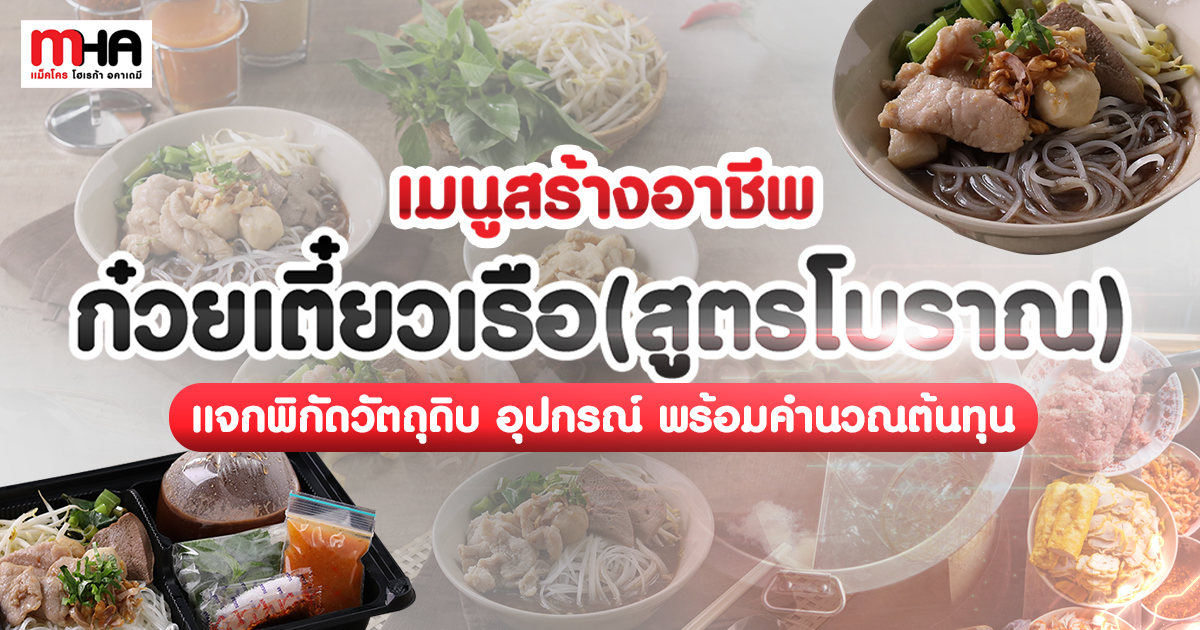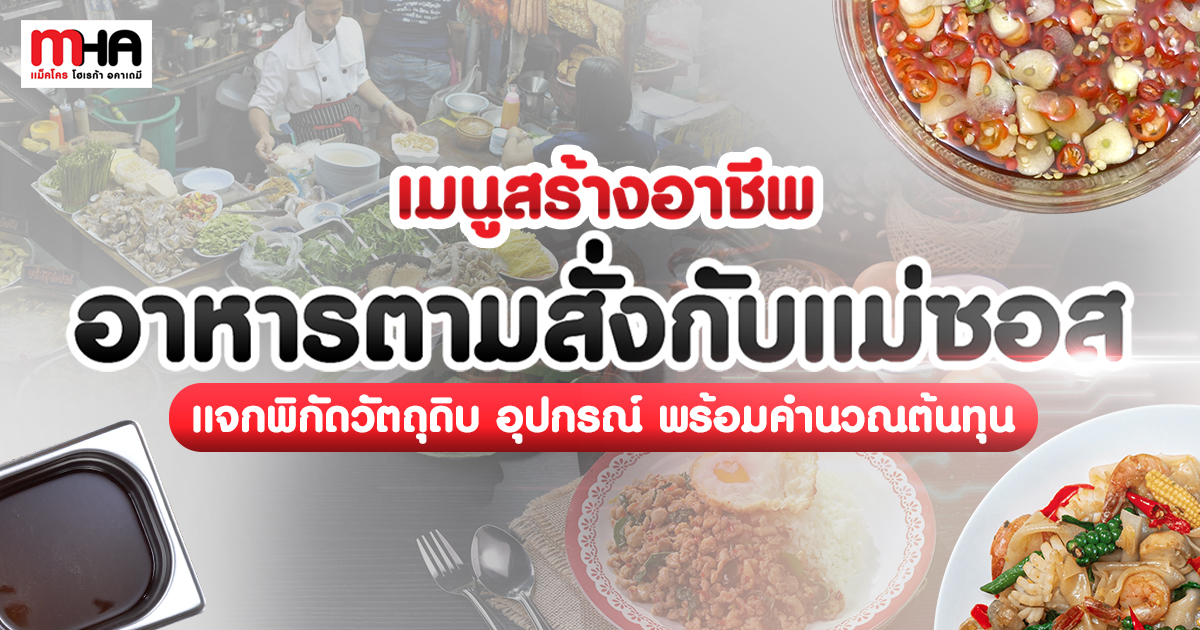Upsell and Add Value by Mixing & Matching Restaurant Menu Items by Using Japanese Noodles
Noodle menu items have been around Thai people for so long that they are as important as rice, whether they are soup noodles, Rad Na noodles, Pad See Ew noodles or Suki noodles. In particular, if we’re talking about noodles from other countries, ramen is probably one of the first kinds of noodles that pops into Thai people’s minds. They are offered in department stores, and there are even 24-hour ramen restaurants in Thailand.
Japanese cuisine itself has already captured about half of Thailand with its attractive decorations, great flavors and superb ingredients. Therefore, it’s probably a good idea to add the value to restaurant menu items by offering Japanese cuisine. Upsell by using Japanese ingredients. And while we’re discussing noodles, Japan has many different noodles with different flavors and textures for cooking a variety of dishes. You can mix and match these with Thai menu items.
Great Japanese Noodles Go beyond Ramen
Our country offers small, large, thin or other noodles such as egg noodles and Giam Ee noodles, so it shouldn’t be a surprise that Japan does as well. Let’s take a look at some suitable noodles for mixing and matching with restaurant menu items.
Soba – This type of noodle is made from flour and soba seeds (buckwheat) mixed with wheat. It has a soft brown color with a unique fragrance. Soba seeds have great detoxification effects, and soba noodles can be eaten either hot or cold. However, they are often eaten cold (zaru soba). Thai menu items that are compatible with soba noodles include Guay Tiao Ruea Soba, Miang Pla Pao Sen Soba, Yum Sen Soba Thale, and Yum Pak Kached Sen Soba.
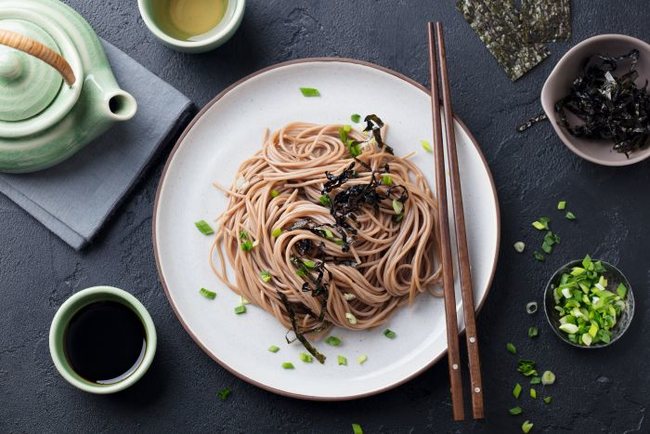
Somen – This white, thin, small type of noodle is the smallest of all Japanese noodles. Made from wheat, these noodles are often eaten cold. Thai menu items that are compatible with somen noodles include Somen Loog Chin Mu Nam Sai, Somen Pad Koi See Mee, Tam Sua Sen Somen, Khanom Chin Sen Somen Nam Ya Pa, and Rad Na Sen Somen Krob.
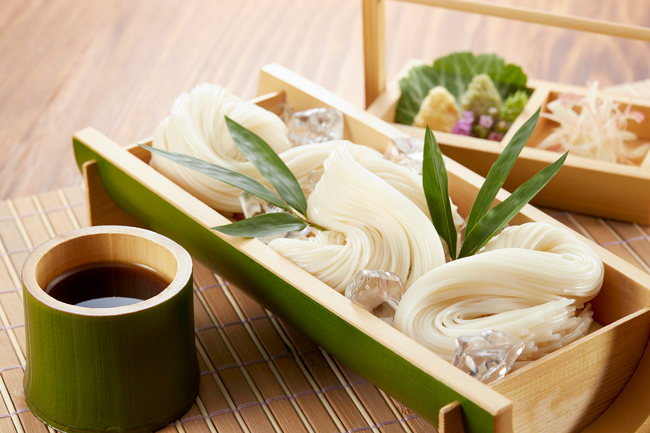
Hiyamugi – This wheat noodle is similar to somen in size but has the elasticity of udon noodles. Popularly prepared and eaten cold during the summer like somen, menu items Thai people are familiar with that are compatible with these noodles include Pad Thai Sen Hiyamugi, Rad Na Sen Hiyamugi, Caborana Sen Hiyamugi and Moo Manao Sen Hiyamugi

Ramen – These Japanese noodles are similar to Chinese yellow egg noodles. They are small, jagged and long. Made from wheat mixed with eggs, they have a soft yellow color and are popularly served with four differently flavored soups: miso soup, salty soup, soy sauce soup and pork bone soup. If you are planning on opening a noodle restaurant, try adding ramen as another option for customers in addition to offering small, large and thin egg noodles. And you can set a special price just for these items.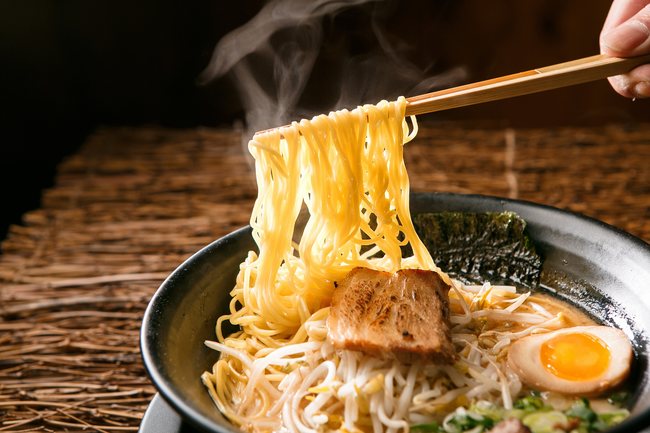
Udon – This is another type of noodles that Thai people are familiar with. The largest of all Japanese noodles, they are white, thick and glutenous. Made 100% from wheat, there are both round and flat with availability in fresh and dried form. They are frequently used in stir-fried dishes or made into noodle soup. Thai menu items that are compatible with udon include Tom Yum Koong Udon, Udon Pad Khi Mao Thale, Udon Pad See Ew and Udon Ob Cheese.

Decorate a Little to Boost Sales through the Social World
Increase “Japanese-ness” through decorations to add value. When every meal is served with elegant presentation and impressive decorations, customers will want to take pictures and post, share or tag friends online, so you get free marketing.
You can order various Japanese noodles at Makro Click >> http://bit.ly/34K5Uvn


